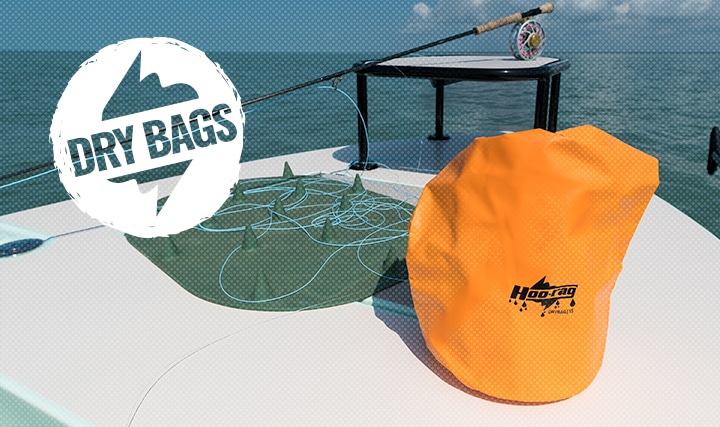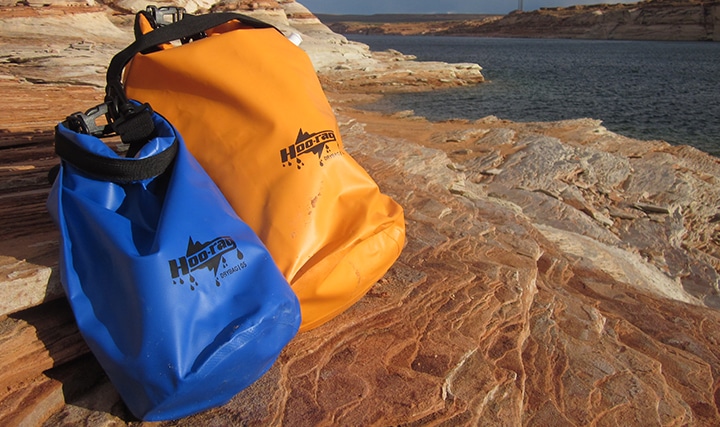
Most fans of the outdoors have used or at least heard of dry bags. The concept is simple: protect your gear by placing it in a bag that protects it from the elements. And while dry bags often do a great job doing just that, they have even more uses you may not have thought of.
Here, we list 7 great uses for dry bags.
1. Storing Electronics
When thinking of things we don’t want to get wet, electronics are usually at the top of the list. It only makes sense that phones, cables, cameras, and laptops are stored in a dry bag. The bags also double in purpose to provide protection from sand, dirt, or dust.
But even when there’s no chance of your electronics getting wet, dry bags can keep your bag organized and your cables separated. The thick and sturdy material of most dry bags means that stray cables and plugs shouldn’t pierce through the bag.
2. Keeping Clothes Dry
Clothes and sleeping bags may be your second top priority when thinking of things to keep dry. However, this is particularly important in cold environments or near snow. The cloth of clothing or sleeping bags can’t insulate your body heat as well if it’s wet.
Dry bags can keep your clothes dry, but they can also keep you warm by ensuring that you’ll have dry clothing to change into later.

3. Holding Water
The same material that makes dry bags so successful at keeping liquids out makes them ideal for keeping liquids in. If you find yourself in need of a bucket, water bottle, or another container that won’t leak as you carry it, a dry bag may be the way to go.
4. Workout Tool
If you find yourself far from a gym, a dry bag filled with water is a perfect substitute for a kettlebell. The benefit of using a dry bag over a rock or other object is that you can more accurately measure the weight. A 10-liter dry bag should weigh about 22 pounds.
5. Travel Pillow
Dry bags can hold air almost as well as they can hold or keep our liquids. This makes them a good substitute for many inflatable objects, one of which is a travel pillow.
All you have to do is make sure the bag has some air in it before sealing. It doesn’t need to be all the full, or it will be more like a beach ball than a comfortable pillow. Keep in mind that your head will displace some of the air as you put pressure on it.
6. Bear Bag
Because dry bags are waterproof and air-tight, they’re usually scent-proof as well. This makes them ideal for storing food without attracting animals and has the added bonus of keeping your food from getting soggy or dirty. As with any bear bag, remember to hang it properly in case a bear is attracted.
7. Emergency Flotation Device
Most dry bags have some sort of disclaimer against using them as a flotation device. However, in a pinch, a quality dry bag is better than nothing. Most dry bags are designed to float, so filling with one air should make it buoyant enough for a few minutes of relief as you swim to safety. A dry bag can even be inflated and work as a flotation device while your other gear is inside, though you may want to stay away from anything heavy.
Pack It Up
Dry bags are an incredibly versatile piece of gear for anyone spending time in water, snow, or sand. Really, they can be useful in any situation in a variety of ways. Available in different colors and sizes, it’s easy to find a dry bag that fits your needs.
Have you thought of a use for dry bags that we don’t list above? We’d love to hear it!
